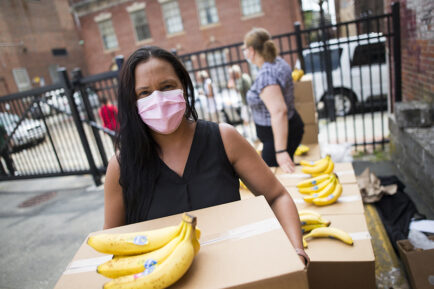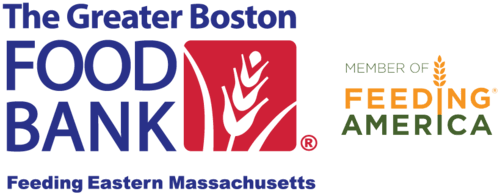Food Insecurity Remains Well Above Pre-Pandemic Levels
One of the most widespread effects of the COVID-19 pandemic is that many people throughout the country are experiencing food insecurity for the first time. When a household is not able to provide enough food for every person to live an active, healthy life, they are considered food insecure. Food insecurity is a serious matter of public health and poses an even bigger health threat to our community’s most vulnerable populations.

At the end of March, Feeding America released updated food insecurity projections that still show that the state of Massachusetts saw the greatest percentage increase in food insecurity in the country in 2020 due to the pandemic, a 47% increase over 2019.
In 2021, Feeding America is projecting a slightly more optimistic outlook relative to 2019 – a 20% projected increase in Massachusetts and a 30% increase for GBFB’s service area of Eastern Massachusetts. Hopefully, these new projections provide clarity to what we have been and will be experiencing, but only time will tell.
Reports from GBFB food pantry partners show chronically high demand for emergency food in our region. These monthly reports show that, during the pandemic, approximately 600,000 people per month may be receiving help from a food pantry, more than double the number reported prior to the start of the pandemic.
The new Feeding America data continues to show that this persistent problem of food insecurity is even worse for children. Children will once again be at a higher risk of food insecurity compared to the overall population in every county. Both the state of Massachusetts (30% increase) and GBFB’s service area of Eastern Massachusetts (47% increase) are projected to experience remarkable increases in child food insecurity in 2021 compared to pre-COVID-19 levels (2019).
Below is a chart that summarizes these new Feeding America projections for both Eastern Massachusetts and Massachusetts.
2019 to 2021 Food Insecurity Rates |
||||||
| Eastern Massachusetts | Massachusetts | |||||
| Pre COVID-19 (2019) | Revised 2020 Projection (March 2021) |
2021 Projection (March 2021) |
Pre COVID-19 (2019) | Revised 2020 Projection (March 2021) |
2021 Projection (March 2021) |
|
| People | 1 in 13 (391,170) | 1 in 8 (622,090) | 1 in 10 (507,380) | 1 in 12 (566,930) | 1 in 8 (834,100) | 1 in 10 (682,420) |
| Children | 1 in 13 (81,830) | 1 in 6 (165,000) | 1 in 9 (120,380) | 1 in 11 (120,110) | 1 in 6 (214,790) | 1 in 9 (156,610) |
We will continue to study and evaluate how the COVID-19 crisis is affecting the most vulnerable communities as we receive updated information around unemployment and nutrition policy changes. History has shown us that it will be a slow recovery and we expect that food insecurity rates will remain high for the foreseeable future. The dedicated team at GBFB and our network of 600 committed food distribution partners are here to help.
Need food assistance? Click here to find a GBFB partner agency in your area.
To help us continue to meet the rising demand for food, click here to donate.
